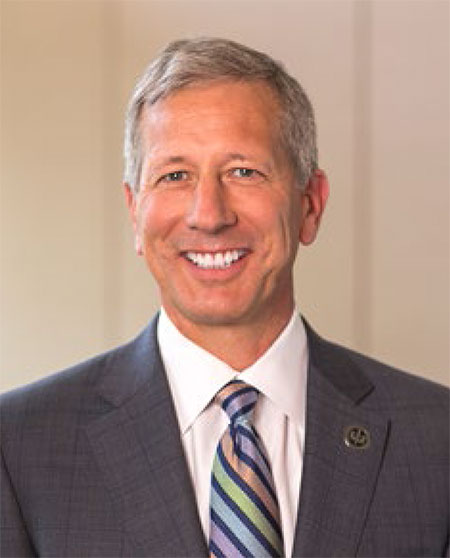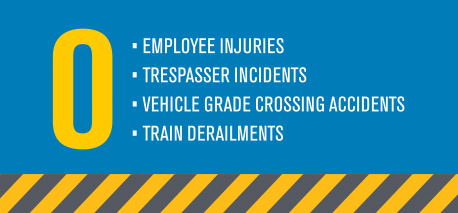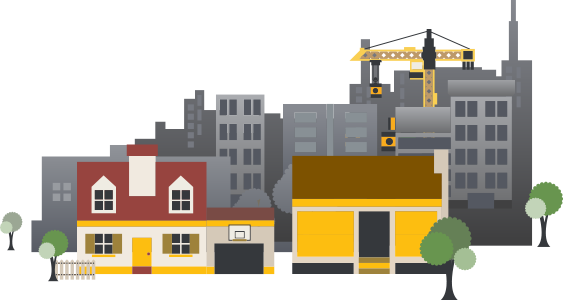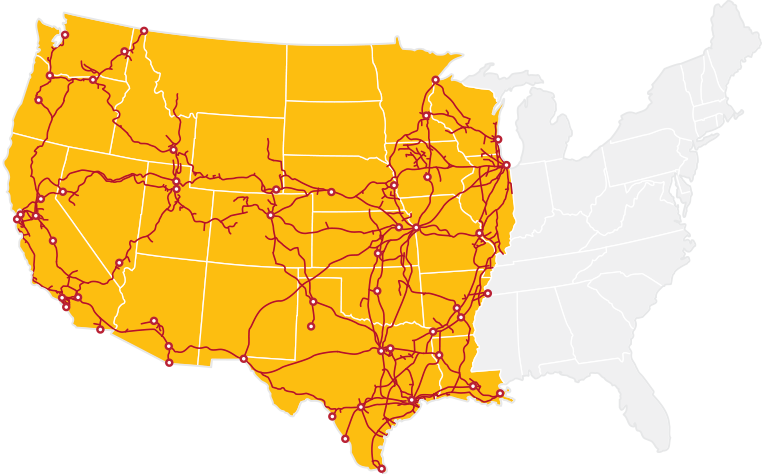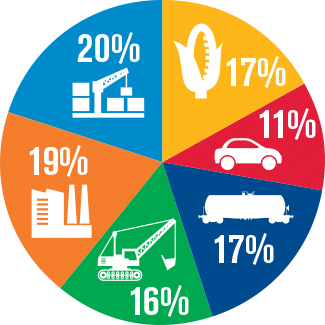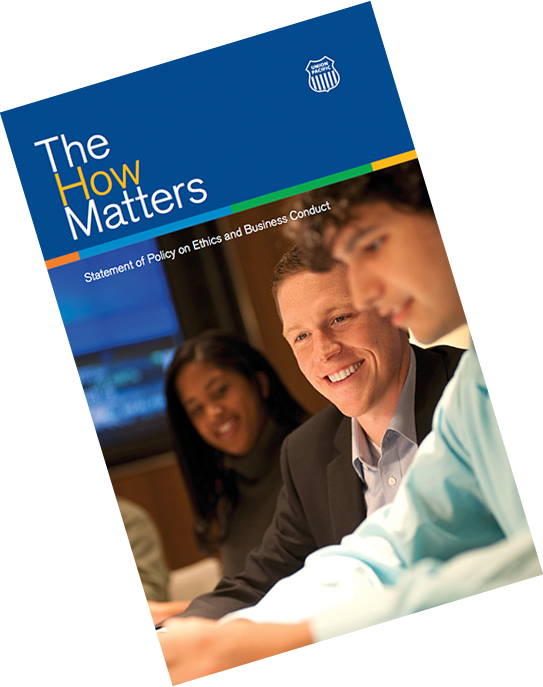As a company that has operated for more than a century and a half, sustainability is built into the fabric of Union Pacific's performance. We recognize our responsibilities as a corporate citizen and are proud to move the goods Americans use every day in a safe, efficient and environmentally responsible manner.
Sustainable business practices are fundamental to Union Pacific's success. They are inherent to our evolved strategy that challenges us to rise above daily tasks and take a 10,000-foot view of where we need to go and what it takes to get there. We call it, "Creating Value the UP Way," and it requires aligning our six value tracks: world-class safety, excellent customer experience, innovation, resource productivity, maximized franchise and an engaged team. We introduced these interrelated tracks in late 2015 as our foundation for success that provides competitive advantages for customers, job stability for employees, returns for shareholders and economic strength in our communities.
Overall economic conditions, uncertainty in the energy markets and the strength of the U.S. dollar contributed to a challenging 2015. Volume declines in coal, international intermodal, frac sand, metals, crude oil and grain shipments more than offset volume growth in domestic intermodal, finished vehicles, automotive parts, industrial chemicals and plastics shipments. We will continue responding to market uncertainties with resiliency to support customers and pursue new business development opportunities.
While we adapt to changing markets, Union Pacific's commitment to Building America and investing in a strong, healthy railroad remains constant. Last year's record $4.3 billion capital program strengthened U.S. transportation infrastructure through private investment, not taxpayer dollars. Investing in a safe, efficient railroad helps communities attract new business, clears trucks off congested highways and reduces wear and tear on publicly funded roads.
Our Building America Report provides a macro view of how we performed in key areas. Each section in this report provides insight on our progress, challenges and commitments.
- Operating Safely illustrates how Union Pacific became the safest Class I railroad in the United States, based on our 2015 employee reportable injury rate. This section also discusses our Crossing Assessment Program, which is focused on enhancing public safety at railroad crossings.
- Strengthening Communities highlights how we improve the quality of life in the communities where our employees live and work, as well as our specific efforts to recruit military veterans, women and millennials.
- Engaging Employees demonstrates how we believe our company's success rests on the shoulders of our people, and how we support our diverse workforce by providing tools that foster employee growth.
- Preserving the Environment underscores Union Pacific's commitment to reducing our environmental footprint, while creating a sustainable economy that benefits our entire country.
We are proud of the work we do and understand there is always more to learn and improve upon. That is why we value continuous conversation with our stakeholders and view this report as a piece of that broader discussion. I invite you to use this report to learn more about Union Pacific and what we hope to achieve.

Lance Fritz
Chairman, President and CEO


